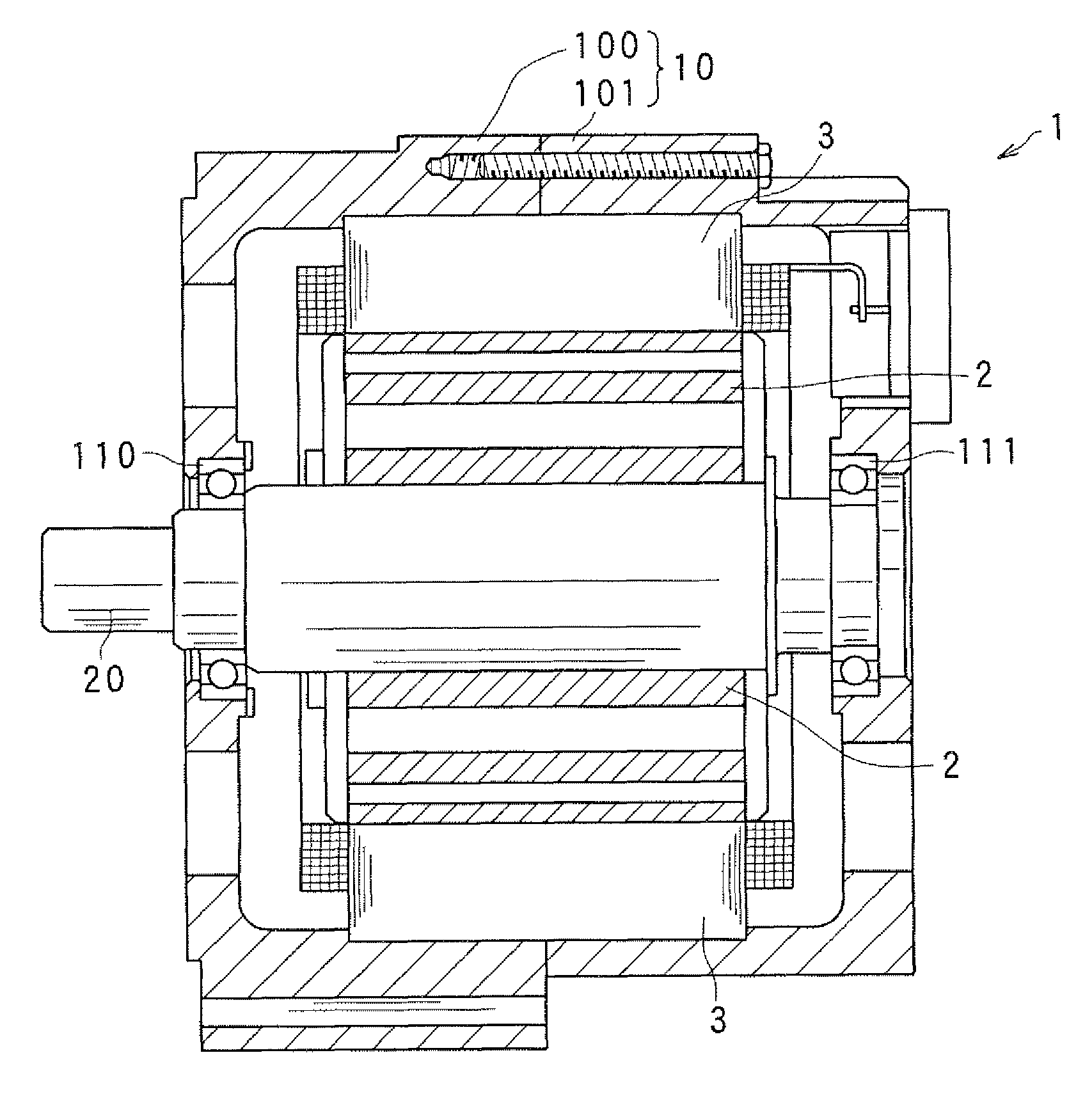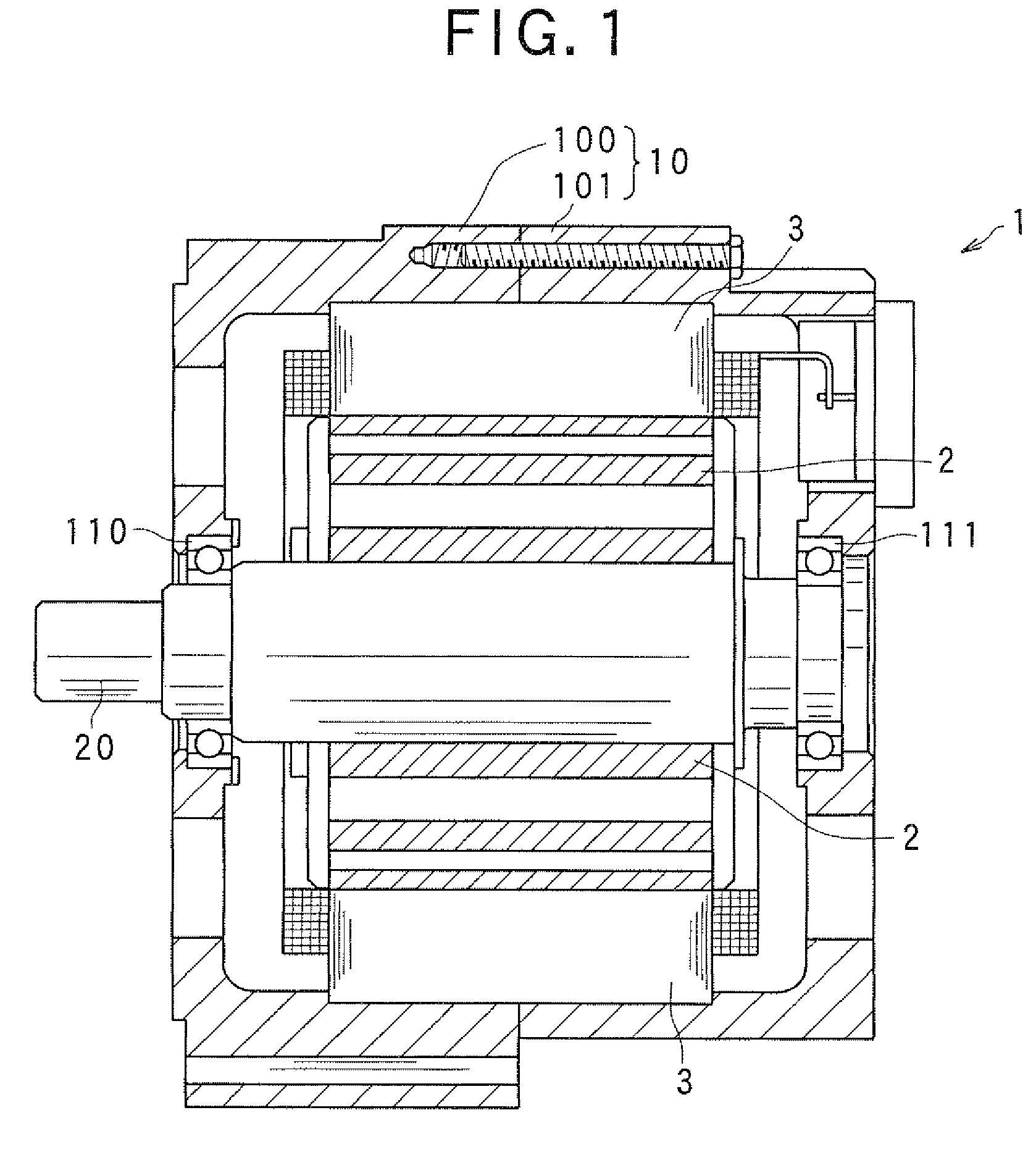Stator of electric rotating machine
a rotating machine and stator technology, applied in the direction of dynamo-electric machines, electrical equipment, magnetic circuit shapes/forms/construction, etc., can solve the problems of excessive magnetic loss of the stator, inability to precisely achieve the desired value of the clamping margin, and inability to assemble the stator coil of a cylindrical cage shape into a stator core of a rigid core shape, etc., to achieve the effect of preventing stress and large manufacturing tolerance of components
- Summary
- Abstract
- Description
- Claims
- Application Information
AI Technical Summary
Benefits of technology
Problems solved by technology
Method used
Image
Examples
first embodiment
[0044]FIG. 1 is an axial cross-sectional view showing a structure of an electric rotating machine 1 including a stator according to a first embodiment of the invention.
[0045]As shown in this figure, the electric rotating machine 1 includes a housing 10 constituted by a pair of housing members 100 and 101 each having a bottomed tubular shape and joined to each other at their opening portions, a rotor 2 fixed to a rotating shaft 20 retractably supported by the housing 10 through bearings 110 and 111, and a stator 3 fixed to the housing 10 so as to surround the rotor 2 inside the housing 10.
[0046]The rotor 2 is provided with a plurality of magnet poles (S poles and N poles) formed in the outer periphery of the rotor 2 facing the inner periphery of the stator 3, such that different poles alternate in the circumferential direction of the rotor 2. In this embodiment, an 8-pole (four N poles and four S poles) rotor is used as the rotor 2.
[0047]As shown in FIG. 2, the stator 3 includes a st...
second embodiment
[0090]In the above described first embodiment, the gaps between the core assembly body 50 and the outer casing 5 are provided in the forms of the slits 5b. However, the present invention is not limited thereto. In the below described second embodiment, the gaps are formed by the shape of the outer periphery of the core assembly body 50.
[0091]FIG. 15 is a plan view showing the shape of one of core pieces 2032 in the second embodiment.
[0092]The stator core of the second embodiment is constituted of a predetermined number of (twenty four in this embodiment) the core pieces 2032 joined in a ring. Each core piece 2032 defines one slot 2031, and another slot 2031 with the circumferentially adjacent slot 2032. The core piece 2032 is constituted including a pair of tooth portions 2320 extending radially inwardly, and a back core portion 2321 connecting these tooth portions 2320 at a radially outwardly position.
[0093]The core piece 2032 is formed with a recess 2332 at the upper edge of the b...
PUM
 Login to View More
Login to View More Abstract
Description
Claims
Application Information
 Login to View More
Login to View More - R&D
- Intellectual Property
- Life Sciences
- Materials
- Tech Scout
- Unparalleled Data Quality
- Higher Quality Content
- 60% Fewer Hallucinations
Browse by: Latest US Patents, China's latest patents, Technical Efficacy Thesaurus, Application Domain, Technology Topic, Popular Technical Reports.
© 2025 PatSnap. All rights reserved.Legal|Privacy policy|Modern Slavery Act Transparency Statement|Sitemap|About US| Contact US: help@patsnap.com



